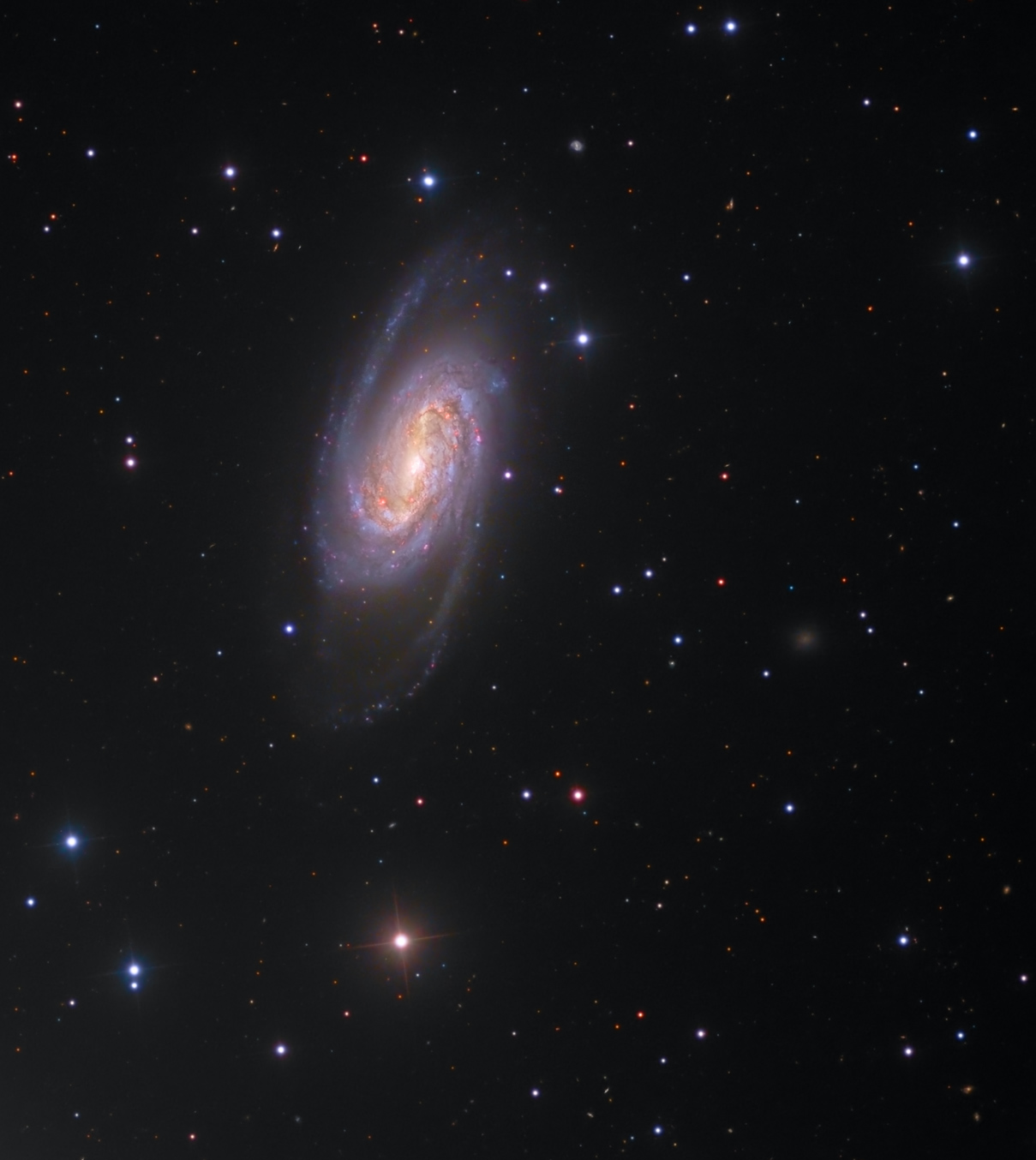Technical Information:
(HaL)(HaR)GB: 390:645:180:180:440 (a total of a bit over 30 hours of exposures); luminance layer consists of blend of 43 fifteen-minute images using a luminance filter,
and 13 thirty-minute images using an Ha filter; R channel is a blend of 12 fifteen-minute images using a red filter, and the Ha data also used in the luminance layer; G consists of
12 fifteen-minute images taken through a green filter, while B is the combination of 22 twenty-minute images taken through a blue filter.
Equipment: RC Optical Systems 14.5 inch Ritchey-Chrétien carbon fiber truss telescope, with ion-milled optics and RCOS field flattener, at about f/9, and an
SBIG STX-16803 with internal filter wheel (SBIG filter set), guided by an SBIG AO-X/STX Guider, all riding on a Bisque Paramount ME German Equatorial Mount.
Image Acquisition/Camera Control: Maxim DL, controlled with ACP Expert/Scheduler, working in concert with TheSky X.
Processing: All images calibrated (darks, bias and sky flats), aligned, and combined (using NormalizeScaleGradient) in Pixinsight. Color combine in Pixinsight.
Ha data blended into the luminance and color layers in Pixinsight. Some post-processing (background neutralization, color calibration, gradient removal, NoiseXTerminator and BlurXTerminator,
done in Pixinsight; some finish work (LRGB combination, saturation adjustment) was done in Photoshop CC.
Location: Data acquired remotely from Sierra Remote Observatories, Auberry, California, USA.
Date: Images taken on many nights during late January and early February of 2022. Image posted March 19, 2022.
Date: Image scale of full-resolution image: 0.56 arcseconds per pixel.
Seeing: Generally quite good, with individual calibrated luminance images having FWHM varying from 1.0 to 1.9 arcseconds.
CCD Chip temperature: -25C
